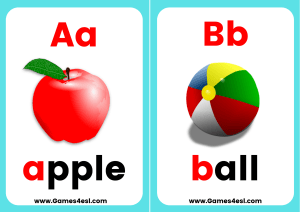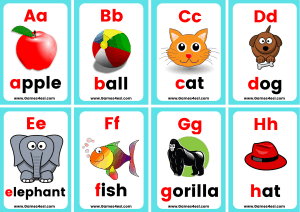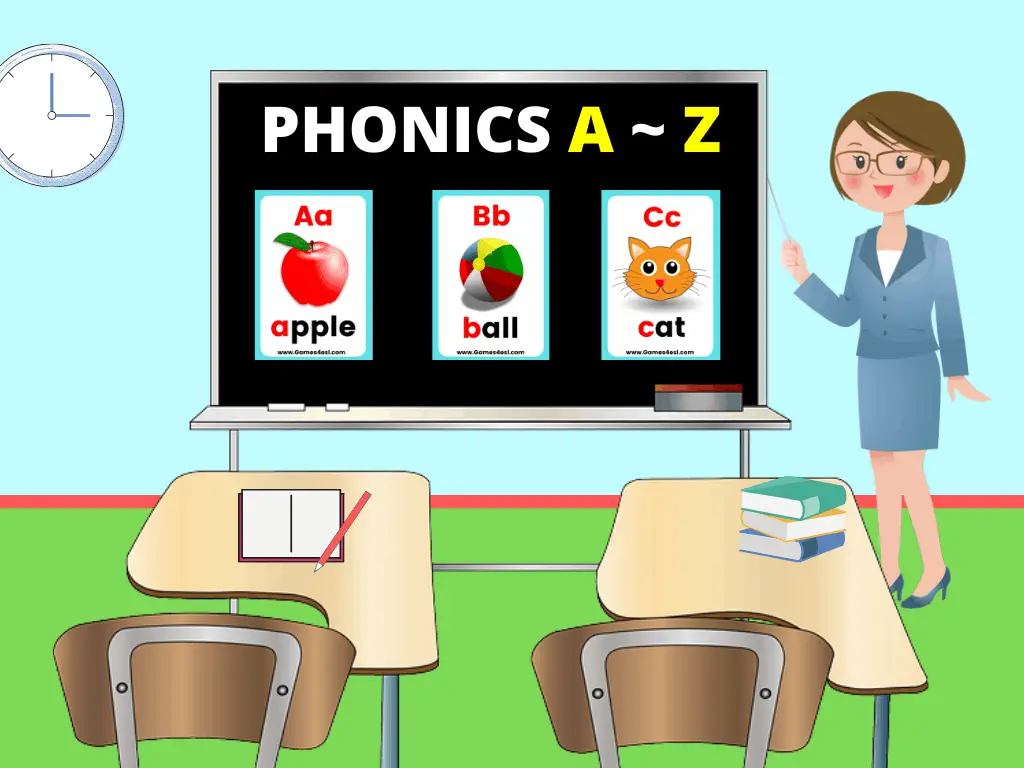Phonics A to Z – A Complete ESL Lesson Plan
Probably one of the first lessons in English an ESL student will take will be about phonics. Learning the phonetic sounds of the alphabet is essential for beginner students if they are to progress onto reading, writing, and speaking in English.
This page is a complete ESL lesson plan to teach phonics to kids who are learning phonics for the first time. All the materials and resources for the games and activities in this lesson can be found below. For more free phonics lesson materials, see the section at the bottom of the page.
This lesson will focus on the alphabet initial sounds A to F as teaching all 26 sounds A to Z in one lesson is probably too much. We would advise teaching the initial sounds A to Z over 5/6 lessons, and you can use the same basic lesson plan structure on this page for all phonics lessons.
Materials for this lesson:
Phonics Initial Sounds – A Lesson Plan for Young ESL Students
Phonics Song
When teaching phonics to kids, singing a fun and catchy phonics song is essential. Not only do young learners love to sing and dance, learning phonics through a song will help students to remember the phonetic sounds of the alphabet.
There are many phonics songs on YouTube, but our favorite is ‘The Phonics Song‘ by KidsTV123.
To begin, play the song in class and ask your students to just listen. Next, play the first part of the song, A to F, and then elicit the corresponding 6 words.
To help students, give them a hint by singing the initial phonics sound. For example, sing ‘a..a..’ and students will respond ‘apple’. After eliciting each word, place the flashcard for that word on the board.
Practice each initial letter sound and ask students to repeat after you (i.e. a a apple, b b ball, c c cat, etc). Once the students have practiced enough, it’s time for a fun flashcard game to practice some more.
Activity 1: Phonics Flashcard Game

Using these phonics flashcards (A to F) show each card to the students and ask them to repeat after you. Then, choose one of the flashcards and don’t show the students.
Ask the students to guess what flashcard you are holding. This forces the students to try to recall the 6 phonics sounds and words they just learned.
If a student guesses correctly, then invite that student up to the front to choose the next card and play the role of the teacher.
This simple flashcard game is very effective and kids will really try hard to guess correctly as they all want to come to the front and act like the teacher.
Activity 2: Line Bingo

This next phonics game is a fun variation of bingo and is a great phonics listening activity. For this game, print and cut out these phonics student cards ( A to F).
Give each student, or pair of students, one set of cards and ask them to place them in a horizontal line in any order they want. Once students have made a line with their cards, the game can begin.
The object of the game is to turn over all the cards to get bingo. The teacher should say one of the phonics words, for example ‘c c cat’, and then students should check their line of cards.
If the ‘cat’ card is on the left end or the right end of the line of cards, then they can turn that card over. If ‘cat’ is in the middle of the line, they cannot turn it over.
Then, the teacher should say another phonics word, until one of the students turns over all their cards and shouts ‘bingo’.
Activity 3: The Phonics Train Game – What’s Missing?
The Phonics Train is a fun phonics flashcard game based on the game ‘What’s Missing?’.
The above video features all 26 initial sounds A to Z, and is divided into 5 sections, each covering 6 letters.
The first 6 letters, A to F, is what we will use for this first phonics lesson. You can then use this same video in the next lesson to review the next 6 letters, and so on for 6 lessons.
To play, students will see the Phonics Train slowly pass by with 6 phonics flashcards (A to F) on it. As the train goes by, encourage students to say the words aloud (e.g. apple, ball, cat, dog, elephant, fish).
Then, students will see the Phonics train pass by again, but this time with some cards missing. Students must try to guess ‘What’s missing?’. There are 4 levels: Slow, Fast, Very Fast, and Super Fast.
Students really love this game and it encourages kids to focus and to remember the phonics initial sounds.
Review:
To review, play the Phonics Song one more time and ask students to try to sing along this time.
Students should be able to sing along to the first 6 words as they learned them during the lesson (e.g. apple, ball, cat, dog, elephant, and fish).
This phonics song is quite easy to sing along to because the rhythm of the song makes it possible for students to repeat after the singer.
Next Time:
The same basic lesson plan can be used for the next 5 lessons until you have taught all phonics initial sounds A to Z. In the next lesson, start by listening to and singing the phonics song.
Then drill and practice using the phonics flashcards. Play line bingo or another fun game using the phonics student cards. And, play The Phonics Train flashcard game to review.
I hope you found this phonics lesson plan useful. To see all our ready to use lesson plans on many ESL topics, click the button below.

